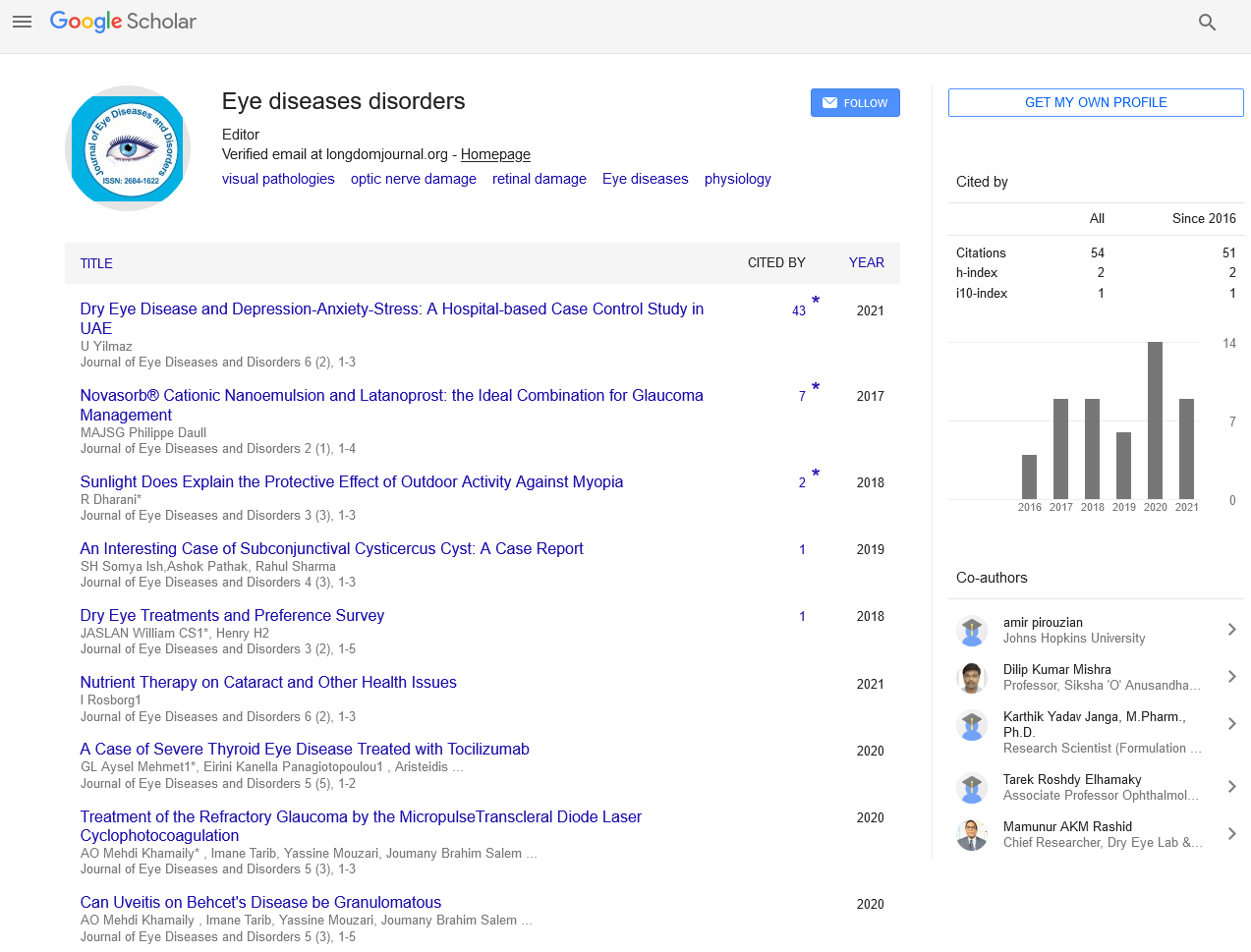Indexed In
- RefSeek
- Hamdard University
- EBSCO A-Z
- Geneva Foundation for Medical Education and Research
- Euro Pub
- Google Scholar
Useful Links
Share This Page
Journal Flyer
Open Access Journals
- Agri and Aquaculture
- Biochemistry
- Bioinformatics & Systems Biology
- Business & Management
- Chemistry
- Clinical Sciences
- Engineering
- Food & Nutrition
- General Science
- Genetics & Molecular Biology
- Immunology & Microbiology
- Medical Sciences
- Neuroscience & Psychology
- Nursing & Health Care
- Pharmaceutical Sciences
Abstract
Dry Eye Treatments and Preference Survey
William CS, Henry H, Jeanette AS and Lindsay AN
Purpose: To survey ophthalmologists regarding their current therapy preferences and desires for future treatment to help guide providers in choosing treatments and pharmaceutical startups in developing future therapies.
Methods: A prospective survey developed internally and sent twice to ophthalmologists.
Results: There were 76 responses. Approximately 30% of respondents stated they examined a few cases of DED patients a day and 20% noted DED was a majority of their practice. Almost all physicians recommended tear replacement drops (95%) for their patients while 80% prescribed cyclosporine. Importantly, 40% started prescribing lifitegrast and the same percent prescribe tetracycline. When asked what new mechanisms of action physicians preferred, about 70% indicated improved tear film stability, while 50% desired greater lacrimal gland tear production. Further, 70% of physicians noted they would prescribe a product that increased tear film stability as first line. With two anti-inflammatory DED products currently available 55% of participants noted a third product should have a different mechanism of action while 25% desired better anti-inflammatory activity. In evaluating the available DED medications specifically, participants believed cyclosporine and lifitegrast had similar moderate levels of efficacy; with lifitegrast being slightly better tolerated than cyclosporine.
Conclusions: The survey showed that DED patients are an important part of the ophthalmic practice. Multiple different therapeutic techniques are used and there is desire for new products that especially would treat tear film stability and corneal surface disease.
Published Date: 2018-05-19; Received Date: 2018-04-25

